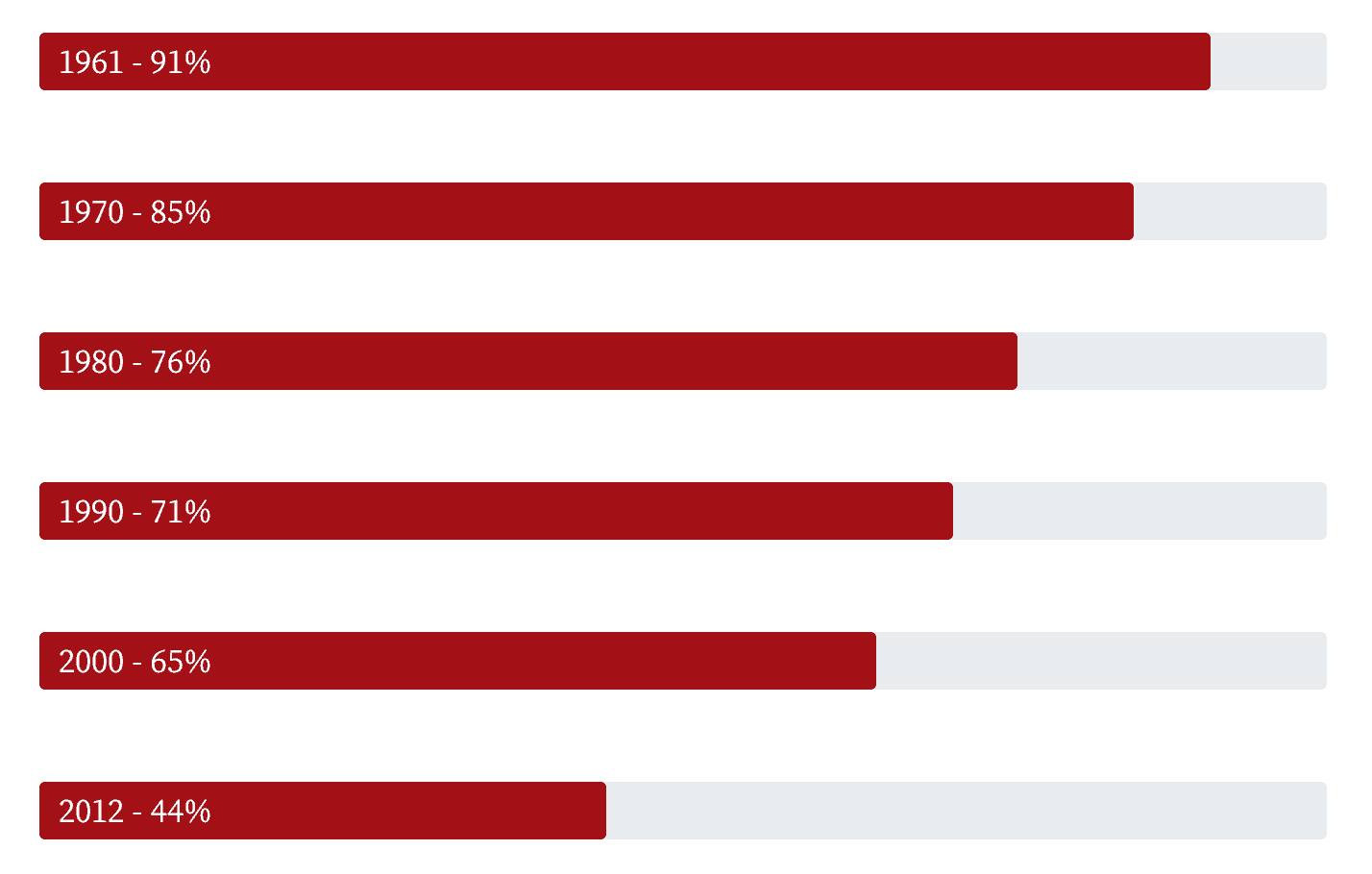If it’s not differentiated and hard to copy, it’s not an innovation, it’s an improvement!
Leon Shivamber

Market place innovation or disruption is driving you out of business, you don’t know it yet. Here is what you need to do to avoid this fate.
Your customers are much smarter than you imagine. They control businesses through the power of their purchasing decisions. They decide the direction of successful and failed products and services. With customers, the company flourishes, and without them, dies. So, if you expect to stay in business, you have to understand what customers need over time.
You want your business to thrive, and you have the long-term aim to eliminate or at least reduce competition. But you must realize that your competitors have the same aim; they are trying to get rid of you.
Improvements are not enough
We know that customer preferences are changing all the time. They want new and improved products that they can either show-off, use to increase their productivity, or buy at a much lower cost. If one firm does not offer new ideas, another firm can, and customers will switch. Your competitor knows this and probably has an improvement program focused on delivering what the customer wants. So the first step in staying alive lies in improvements, which every firm should undertake.
Your company may be thriving, you may have a healthy set of improvement projects underway, but things will change in your marketplace. And when they do, if your improvement program is not up to the pace of change, or equal to the competition, your business will stagnate and shrink. Other firms will win your customers with their improved products and services.

Photographed By: avaragado
General Motors and the entire US Auto industry are good examples of the problem. After decades of a strategy focused on building scale, the American car manufacturers were on top of the world. By 1961 the held a combined 91% share of the USA auto market. As the international carmakers at first improved their quality and reliability, the US automakers ignored the new upstarts. They did so even as their improvements began to win over small segments of the market. By 1970, market share had only declined 6%, but because the market was growing, they did not experience a reduction in the number of cars sold. Later as the international challengers continued improving, now focusing on design and style, the market shifted, and the decline accelerated. Over the years, though, General Motors never changed, continuing to focus on scale. They made improvements that at best kept them equal, and at worst sped up the shift of customers to the competitors. For the US automakers, their improvement efforts were not enough. Today, their joint market share is below 44%.
Declining Share of US Market held by US Auto manufacturers (1961-2012)

Source: Wards Automotive
Small improvements can allow you to stay equal to competitors in your industry. With a focus on change, you may even increase profits as long as your ideas are better. But this strategy is risky as it assumes other firms will not improve exceptionally. In a worst-case scenario, a competitor will differentiate their product or service immensely and can knock your business (and others) out of the market. To prevent extinction, your strategy should be to differentiate your improvements from competitors in ways that are valuable to customers. To be innovative.
To prevent extinction, your strategy should be to differentiate your improvements from competitors in ways that are valuable to customers. Please Click To TweetValuable Innovation is differentiating and hard to copy
An improvement is doing the same thing better. On the other hand, innovation is doing something different. A large enough improvement can create crucial differentiation between competitors. This distinction will cause customers to notice and find the innovation worth their time and money. Your competitors will notice and if they feel threatened will increase their improvement efforts to respond. So an improvement will only drive real incremental benefits if it’s an innovation, differentiated and hard for competitors to match.

While many companies embraced the innovation agenda and are investing heavily in innovation, they didn’t deliver much differentiation. Sadly, they created fewer improvements that couldn’t be readily copied by their competitors. The result? Massive investments in programs that delivered little tangible improvement in profitability, at best. At worst, some companies spent massive amounts of money in acquisitions and research and development (e.g., Nokia) looking for innovations, and saw their business decline due to disruptive innovation.
Kodak is a great example of a company that invested in improvements and innovation but could not avoid being out-innovated and disrupted.
Kodak was a leader in analog photography and spent large sums on improvements that they thought were valuable to a professional photographer, their core customer.
They began to meet difficulties with the increased competition as other firms emerged in the photography industry. Firms like Fuji Corporation, IBM, Apple, and Sun shifted the industry away from the traditional analog mindset of Kodak towards digital technology. At first, the quality wasn’t good enough for professionals. So Kodak ignored the technology, just as the American car manufacturers ignored the Japanese in the 1960s and ’70s.
Digital cameras were heavy, slow, expensive and did not produce high-quality images, but they were loved by amateur photographers because of their flexibility and reusability.
They had the equivalent of Moore’s law working for them, that dramatic improvement could be achieved each year in size, power consumption, and quality.
Kodak continued to focus on making improvements to its products and by lowering prices. But by then it was too late, as digital began to rival the analog quality and was embraced by the professional.
Kodak innovation investments had created no differentiation and were an enormous expense that was delivering no value. They lost so much revenue that Kodak was unable to stay competitive in the long-run.
Disruptions come from Innovations that are differentiating, hard to copy and ignored by your competitors
Your best strategy is creating an innovation that is differentiating, difficult to copy and ignored by the competition for any reason. This could drive a major disruption in the marketplace and severely limit competitors. But, creating an improvement that goes unnoticed by competitors is difficult, and requires creatively thinking outside your box. The product or service must have aspects that you discovered are important for the consumer, while your competitors in your industry think them useless.
Differentiated products or service must have aspects that you discovered are important for the consumer, while your competitors think them useless. Please Click To TweetWhen Apple’s iPhone was first released, competitors ignored many of the innovations. Blackberry and Nokia were the market leaders at the time. They believed that consumers would never want a product so expensive and which did not have a keyboard. They were wrong.
The smartphone was radically differentiated, was ignored and was hard to copy. Once the evidence was clear that customers valued the new innovations, Blackberry and Nokia scrambled to produce similar smartphones, but the damage was done. Today, they are struggling in the market they once proudly led.

Photographed By: tropical.pete
It can be complicated to create an innovation that will be disregarded by competition. The main point is that to preserve interest, profits, and business in general, it is critical to constantly improve products. But improvements are not enough.
The customer is the most important determinant in your ability to stay in business. And those customers will always want innovation. If you are not innovating, your competitor is, and you stand the chance of losing your market position.
The customer is the most important determinant in your ability to stay in business. Please Click To TweetYour best bet is to focus on disruption, starting with your own products and services. If you can disrupt yourself, then do it before someone else does. Finally, even after disrupting your market, remember it is pivotal to continue improvements. You have to improve in order to keep your customers in the long-run. Become comfortable knowing there is always someone out there innovating and thinking of a way to disrupt you.
Become comfortable knowing there is always someone out there innovating and thinking of a way to disrupt you. Please Click To TweetBorders Store Photographed By Andrew Griffith
This makes a good point and a realistic one but you also have to keep in mind the fads that come and go… Anybody remembers of MySpace? Many people jumped on that bang wagon and what happen! I find it hard to believe that 90% of all PCs in the market are still equip with USB2 when USB3 has been in the market since 2013!
Interesting topic! Thanks for sharing such post. It’s new to me.
Great and really intersting article to read.really a Valuable points you written..
Thanks
Macnross
A really valuable read. Kodak takes me back many years and I haven’t though of this brand for a long time. Just goes to show, one businesses innovation can kill a business that insists their established product holds longevity. It’s dog eat dog and if you can give a consumer something they want before they even know it, you’ve struck gold.
I’ve never heard this distinction before. It was interesting. I was taught that an innovation also meant making things better but your view on it being an improvement makes a lot of sense. I’m currently finishing my studies at a very good business school. I will bring up this distinction.
Sebastian, thanks for your comment. Making things better should be a natural instinct, and on its own will not lead to competitive advantage, unless the others are not improving. But when you make an improvement that is differentiating and hard for the others to replicate, that’s when that improvement moves into the realm of an innovation. Are your teachers focusing on the differentiation part in the discussion of innovation?
Definitely. This would fit under the competitive advantage. The aspect of differentiation is mentioned but the twist on it being KEY for innovation is what caught my attention.
Reminds of Kodak company. In the late 70s or 80s, the company is planning to launch a digital camera. It’s all film-based photography at that time then. But they believe it would take a decade or so for digital photography to come into fruition. They stick to their core business: continue to make film reels.
When digital cameras and mobile phone-based cameras crashed into the scene, Kodak was not prepared for it. Now the company has filed for bankruptcy. If only they pursued digital photography, they would have been the market leader now.
Leon,
I am sure you have read Clay Christensen’s book on the topic. Great read. In medicine, companies like Walgreens are starting to get into the primary care business. They are creating a cheaper, more convenient alternative to general practitioners. I wonder how long it will take for primary care providers/general practitioners to differentiate and improve? Some have already responded by setting up “boutique practices”, but the vast majority continue to ignore the needs of the working masses. I do not think they are improving to keep up with their clients.
This is a tremendous read……
Thanks Ed. You have seen a lot changes over the years in the semiconductor business. Fortunately, the analog stuff has a much longer lifecycle it seems.